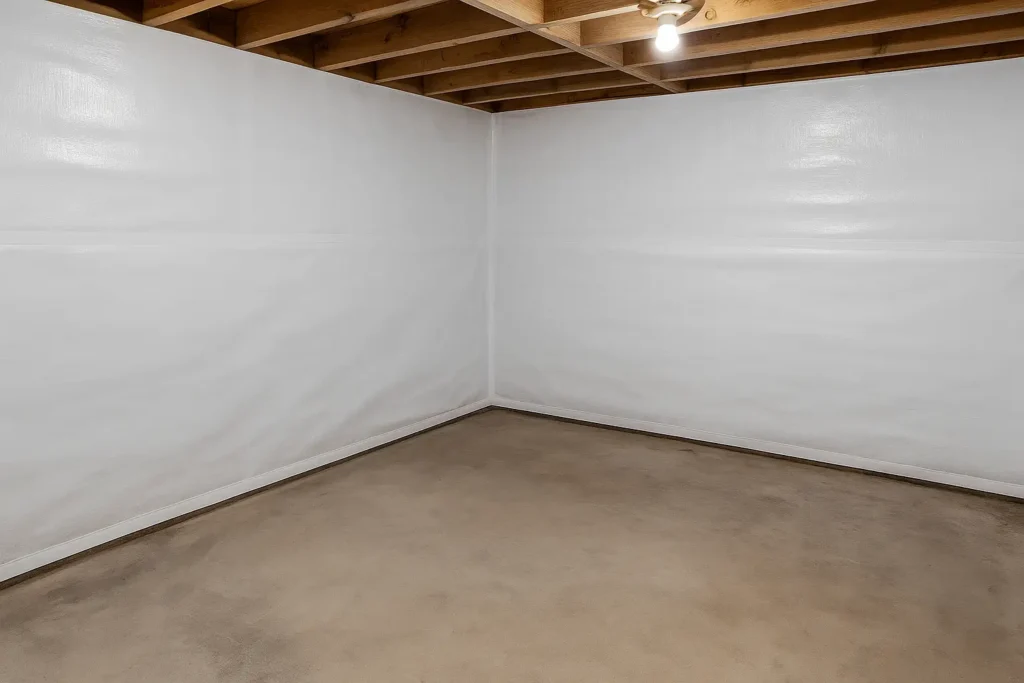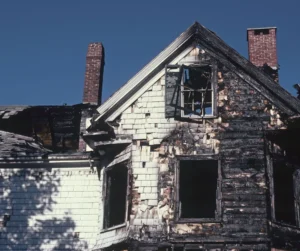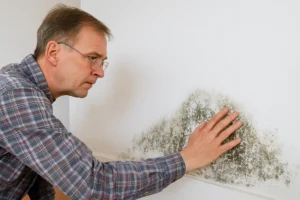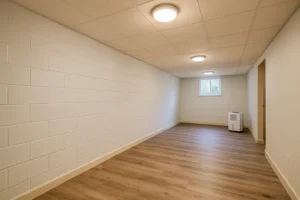If you’ve ever walked into your basement and caught a musty smell—or worse, spotted fuzzy growth creeping along the walls—you’re not alone. Basements are the most common place for mold to grow in a home. They’re cool, dark, and often damp—the perfect combination for mold to thrive.
Whether you use your basement for storage, laundry, or as a finished living space, learning how to prevent mold in basement areas can save you from expensive damage and potential health problems down the road.
In this blog, we’ll explain why basements are so mold-prone, show you how to keep them dry and clean, and help you decide when it’s time to call in professionals.
Why Is Mold So Common in Basements?
Mold is a type of fungus that feeds on moisture and organic materials—things like drywall, wood, insulation, and even dust. It reproduces by sending spores into the air, which can quickly spread once the right conditions are in place.
Basements are a favorite mold habitat because:
- Humidity is higher underground
- Ventilation is limited
- Leaks and flooding often go unnoticed
- Poor drainage around the home can let water in
- Condensation forms on cold surfaces
The key to preventing mold is controlling moisture. And that starts with knowing where to look and what to fix.
Signs You Might Already Have Mold
Before we dive into prevention, here’s how to tell if mold may already be in your basement:
- Musty or earthy smell that won’t go away: This persistent odor is a key indicator of mold growth and signifies the presence of microbial volatile organic compounds (MVOCs) released by actively growing mold colonies.
- Discolored patches on walls, ceilings, or floors: These visual signs can range from black, green, brown, to white and indicate mold colonies feeding on the organic materials present in building materials. The color and texture can sometimes provide clues to the type of mold present.
- Peeling paint or bubbling wallpaper: Moisture trapped behind paint or wallpaper creates an ideal environment for mold growth, causing the adhesive to fail and the surface to peel or bubble. This is a clear sign of underlying moisture issues.
- Warped wood or sagging drywall: Excessive moisture absorption causes wood to swell and warp, and drywall to lose its structural integrity and sag. Mold can further exacerbate this damage by feeding on these materials.
- Allergy-like symptoms indoors (sneezing, coughing, skin irritation): Mold spores and mycotoxins released into the air can trigger allergic reactions and respiratory issues in susceptible individuals. These symptoms often worsen when spending time in the affected area.
If you’ve noticed any of these, it’s a good idea to schedule a professional inspection before trying to fix the problem yourself.
How to Prevent Mold in Basement: 10 Proven Tips
If you only remove mold without dealing with what caused it, like a roof leak or high humidity, it will likely come back.
Mold remediation isn’t just about cleaning. It’s about restoring the health and safety of your home.
That’s why at Tradewinds Restoration, we specialize in full-service remediation, not quick cover-ups.
1. Keep Humidity Below 50%
Use a hygrometer (a cheap humidity monitor) to track moisture levels.
If it reads above 50%, run a dehumidifier to pull excess moisture out of the air.
Tip: Place your dehumidifier near laundry machines or sinks, and empty the tank regularly.
2. Use a Sump Pump (and Maintain It)
If your basement has ever flooded, a sump pump can help prevent standing water.
Just make sure:
- It’s working and plugged in
- The discharge line is clear
- You have a backup power source in case of storms
3. Seal Basement Walls and Floors
Use waterproofing paint or concrete sealant to stop moisture from seeping in through basement walls and floors.
This creates a barrier that reduces condensation and surface dampness.

4. Insulate Pipes and Walls
Cold surfaces like metal pipes or concrete walls can cause condensation, especially in summer.
Add foam pipe insulation or rigid foam wall panels to keep surfaces dry.
5. Check for Cracks and Leaks
Inspect your basement’s:
- Foundation walls
- Window frames
- Floor joints
- Under sinks and laundry machines
Seal any cracks with waterproof caulk or epoxy. Even small leaks can lead to big problems over time.
6. Improve Airflow
Mold loves still air. Open windows when possible, or install exhaust fans to help circulate air in and out of the basement.
In finished basements, make sure air ducts are clean and vents aren’t blocked by furniture.
7. Use Mold-Resistant Materials
If you’re remodeling or finishing your basement:
- Use mold-resistant drywall or fiberglass-faced panels
- Choose tile or vinyl over carpet
- Opt for metal studs instead of wood framing
These materials hold up better in moist environments and give mold less to cling to.
8. Store Items Off the Floor
Keep storage bins, boxes, and furniture at least a few inches above the floor—especially near walls.
Use metal or plastic shelving instead of wood.
This allows air to circulate and helps you spot water issues quickly.
9. Clean Regularly
Dust, dirt, and organic debris can feed mold, so make cleaning a regular habit.
- Wipe down surfaces
- Vacuum with a HEPA filter
- Check behind appliances or storage areas for hidden moisture
10. Check Exterior Drainage
Make sure gutters and downspouts are directing water away from your home’s foundation.
The ground should slope away from your house, not toward it.
Blocked gutters or flat grading can cause water to seep into your basement—even if the inside looks sealed.
What If You Already Have Mold in Your Basement?
If you’re seeing mold or smelling that musty odor regularly, it’s time to act.
Trying to clean up mold without finding and fixing the moisture source almost always leads to it coming back.
At Tradewinds Restoration, we specialize in:
- Moisture and mold inspections
- Safe removal and remediation of mold
- Long-term solutions to prevent mold from coming back
- Transparent pricing and insurance claim support
Contact us today to schedule a professional basement mold inspection and take the first step toward a healthier home.
How Much Does Basement Mold Remediation Cost?
The cost to get rid of mold in your basement can change a lot. It depends on a few main things:
- How much mold there is: If there’s a lot of mold, it will take more time and stuff to clean it up, so it will cost more money.
- What kind of mold it is: Some molds are harder to get rid of than others, so they might cost more to clean.
- Where the mold is growing: If the mold is easy to get to, like on a wall you can see, it will cost less to clean. But if it’s hidden in a crawl space or behind a wall, it will cost more.
- How they clean the mold: There are different ways to clean up mold, and some cost more than others.
- If they need to fix anything else: Sometimes, after the mold is gone, you might need to fix things like walls or pipes that got damaged by the water that caused the mold. This will make the total cost go up.
Usually, getting rid of mold can cost somewhere between $1,800 and $10,000. If there’s only a little bit of mold in one spot, it might cost less. But if there’s a lot of mold in many places, it could cost even more than $10,000.
Learn more about our Mold Remediation services
Mold Doesn’t Belong in Your Basement
Mold can turn your basement into an unhealthy, uncomfortable space. But the good news is, you can stop it before it starts.
Now that you know how to prevent mold in basement spaces, you can take simple steps to keep your home dry, fresh, and mold-free. And if you ever need help, Tradewinds Restoration is just a phone call away.





